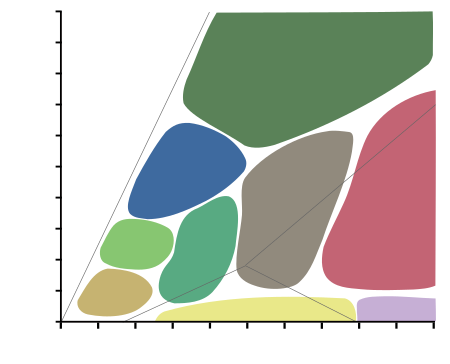Metamorphic facies
A metamorphic facies is a set of metamorphic mineral assemblages that were formed under similar pressures and temperatures. The assemblage is typical of what is formed in conditions corresponding to an area on the two dimensional graph of temperature vs. pressure (See diagram at right). Rocks which contain certain minerals can therefore be linked to certain tectonic settings, times and places in the geological history of the area. The boundaries between facies (and corresponding areas on the temperature v. pressure graph) are wide because they are gradational and approximate. The area on the graph corresponding to rock formation at the lowest values of temperature and pressure is the range of formation of sedimentary rocks, as opposed to metamorphic rocks, in a process called diagenesis.
The name facies was first used for specific sedimentary environments in sedimentary rocks by Swiss geologist Amanz Gressly in 1838. Analogous with these sedimentary facies a number of metamorphic facies were proposed in 1920 by Finnish petrologist Pentti Eskola. Eskola's classification was refined by New-Zealand geologist Francis John Turner throughout his career. A classic work of Turner's was the book he published in 1948 titled Mineralogical and Structural Evolution of Metamorphic Rocks. Turner continued to work in the field, refining the metamorphic facies classifications through the end of his career in the early 1970s.
...
Wikipedia

